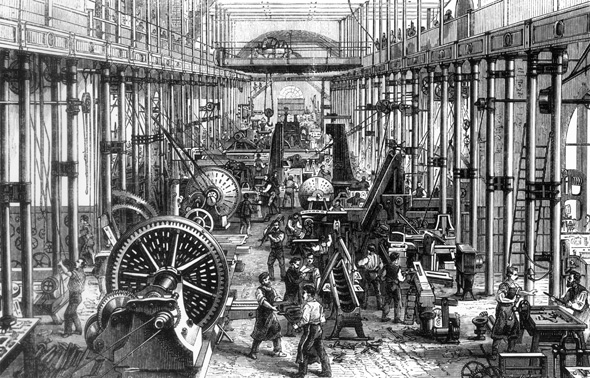













INTRODUCTION | DOCUMENTS | IMAGES | MAPS | EDITOR
|
By the late 1860s, the era of “high capitalism” was dawning. Not far in the future lay the “second” industrial revolution, based on the petro-chemical and electrical industries. But even though manufacturing had gained a decisive edge over the artisanal trades, individual factories and workforces were still not as enormous as one might imagine from contemporary accounts. In this woodcut from 1868, we see Richard Hartmann’s (1809-78) Chemnitz machine works. Hartmann was one of the most successful entrepreneurs and largest employers in the Kingdom of Saxony. In addition to manufacturing cotton spinning machines and drills for the mining industry, he was known as the “Chemnitz railroad king.” He produced his first locomotive, “Glück auf,” in 1848 and his 1,000th in 1878. (The people of Chemnitz turned out regularly to watch a team of horses pull the newest locomotive from Hartmann’s factory to the city’s main railway station.) In 1842, Hartmann employed a total of 200 workers, by 1857 he had 1,500 employees, and in 1900 his workforce numbered about 5,000. On April 1, 1870, a year after his wife’s death, Hartmann reorganized his firm as a joint-stock company – the Saxon Machine Works, Inc. – and withdrew from active management of the company.
© Deutsches Historisches Museum Berlin |
 print version
print version return to image list
return to image list previous image
previous image
